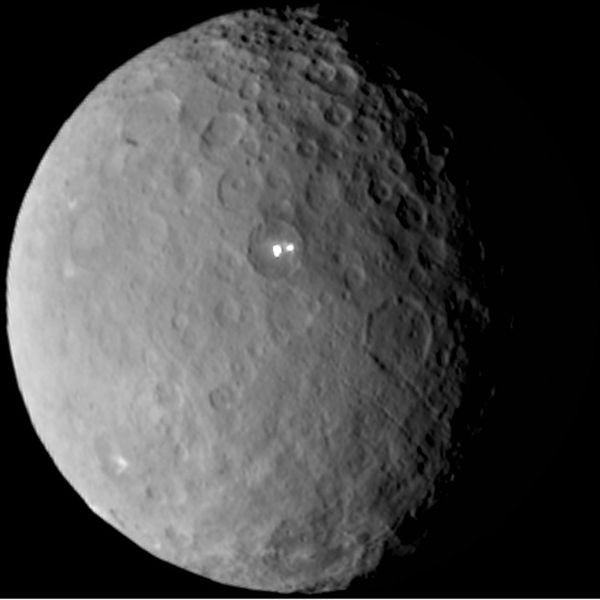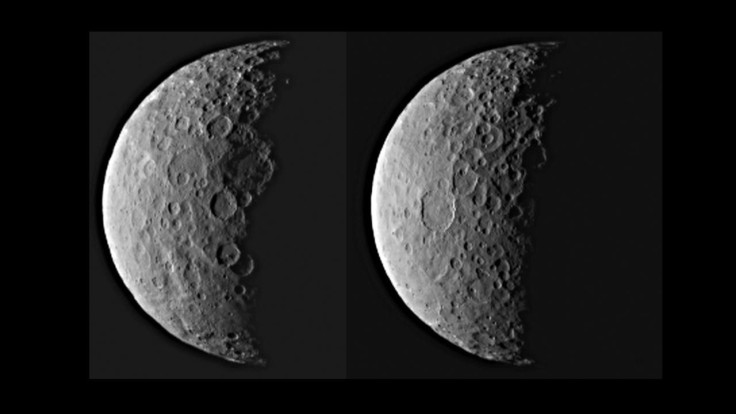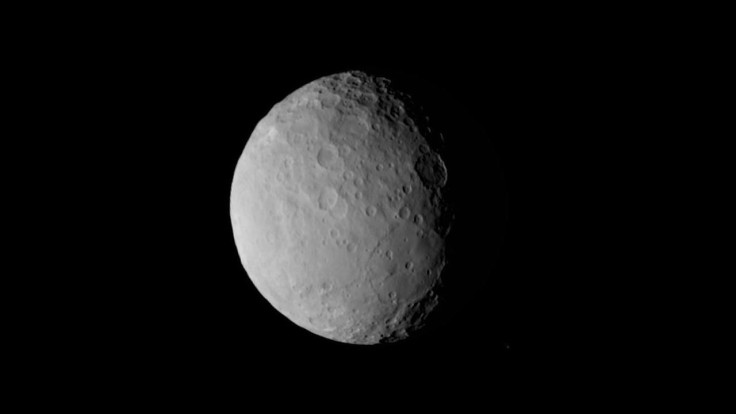NASA Dawn Countdown To Ceres Arrival In Photos, Videos And GIFs

NASA's Dawn spacecraft will reach its destination on Friday. Dawn will enter Ceres' orbit, and astronomers are excited about the historic mission to the dwarf planet. Recent photos from Dawn have piqued the curiosity of researchers back on Earth, including two bright spots that remain a mystery to NASA investigators. Ahead of Dawn's arrival, let's take a look at the photos the spacecraft has beamed back to Earth.
"Studying Ceres allows us to do historical research in space, opening a window into the earliest chapter in the history of our solar system. Data returned from Dawn could contribute significant breakthroughs in our understanding of how the solar system formed," Jim Green, director of NASA's Planetary Science Division, said in a statement.
As Dawn has gotten closer to Ceres, the images have become sharper and surface features have become more visible. Dawn's photos show Ceres to have many craters, but there are two bright spots that have fascinated researchers.
Previous photos showed one bright spot on Ceres, but images from 29,000 miles away revealed a companion bright spot inside a crater on Ceres. "Ceres' bright spot can now be seen to have a companion of lesser brightness, but apparently in the same basin. This may be pointing to a volcano-like origin of the spots, but we will have to wait for better resolution before we can make such geologic interpretations," Chris Russell, principal investigator for the Dawn mission, said in a statement. Dawn has three onboard instruments to photograph Ceres, map the surface of the dwarf planet and to detect elements on its surface.

Studying Ceres will give researchers a glimpse into the past and the formation of the solar system and will compare data collected from the dwarf planet to data collected from Vesta, a large asteroid located in the main asteroid belt between Mars and Jupiter.

"These bodies are samples of the building blocks that have formed Venus, Earth and Mars. Vesta-like bodies are believed to have contributed heavily to the core of our planet, and Ceres-like bodies may have provided our water," Carol Raymond, deputy project scientist at NASA's Jet Propulsion Laboratory, said in a statement. NASA is also looking for any current activity on the dwarf planet.

Ceres is named after the Roman goddess of agriculture. Any craters discovered on the dwarf planet will be named after gods and goddesses related to agriculture and vegetation and other surface features will be named after agricultural festivals.
© Copyright IBTimes 2024. All rights reserved.






















